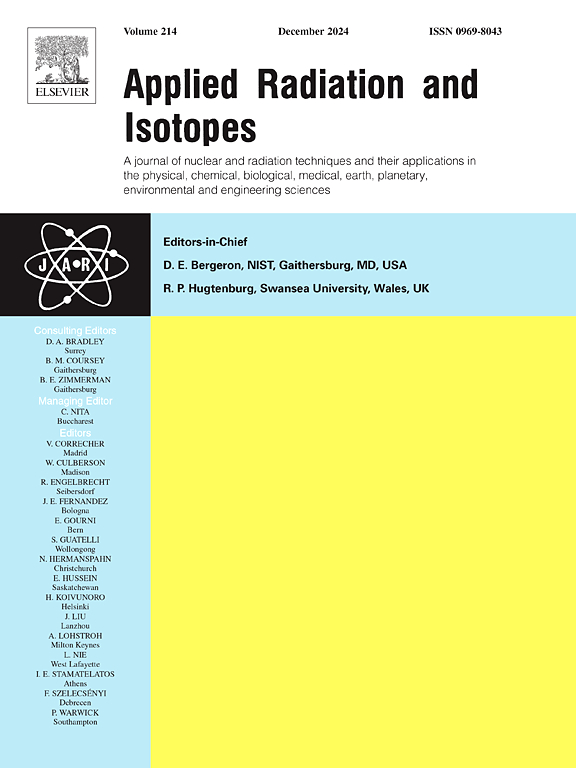Enhancement of the dosimetric properties of N-vinyl caprolactam polymer gel dosimeter for clinical practice
IF 1.6
3区 工程技术
Q3 CHEMISTRY, INORGANIC & NUCLEAR
引用次数: 0
Abstract
In this study, the impact of Lithium Chloride inorganic salt sensitizer on the performance of N-vinyl caprolactam polymer-gel dosimeter was evaluated in terms of dose-response combined with spin-spin relaxation rate (R2) obtained from nuclear magnetic resonance relaxometry technique. The irradiation experiments were conducted using a medical linear accelerator, and the improved polymer gel dosimeters were exposed to various doses, photon beam energies, and dose rates. The signal development of the dosimeters was analyzed using a 0.5 T nuclear magnetic resonance instrument. The dose response of the improved gel at different concentration of co-monomers and at different types of gelatins was investigated. Results showed that the R2 sensitivity of the dosimeter was improved with an increase in Lithium Chloride concentration. With 6 % Lithium Chloride, the sensitivity was improved by more than one and half to two times in the linear dose response rang of (0–10 Gy). Furthermore, no significant impact was seen from varying dose rates and photon energy with the improved dosimeter, and R2 was not affected by changing the irradiation temperature from 10 to 30 °C. Additionally, the dose-response and hence R2 data decreased with increasing scanning temperature and the response was stable for up to five days after irradiation. The polymer gel dosimetry accuracy was estimated by calculating the overall uncertainty and found to be 4.06 % (2σ, 95 % confidence level).
求助全文
约1分钟内获得全文
求助全文
来源期刊

Applied Radiation and Isotopes
工程技术-核科学技术
CiteScore
3.00
自引率
12.50%
发文量
406
审稿时长
13.5 months
期刊介绍:
Applied Radiation and Isotopes provides a high quality medium for the publication of substantial, original and scientific and technological papers on the development and peaceful application of nuclear, radiation and radionuclide techniques in chemistry, physics, biochemistry, biology, medicine, security, engineering and in the earth, planetary and environmental sciences, all including dosimetry. Nuclear techniques are defined in the broadest sense and both experimental and theoretical papers are welcome. They include the development and use of α- and β-particles, X-rays and γ-rays, neutrons and other nuclear particles and radiations from all sources, including radionuclides, synchrotron sources, cyclotrons and reactors and from the natural environment.
The journal aims to publish papers with significance to an international audience, containing substantial novelty and scientific impact. The Editors reserve the rights to reject, with or without external review, papers that do not meet these criteria.
Papers dealing with radiation processing, i.e., where radiation is used to bring about a biological, chemical or physical change in a material, should be directed to our sister journal Radiation Physics and Chemistry.
 求助内容:
求助内容: 应助结果提醒方式:
应助结果提醒方式:


